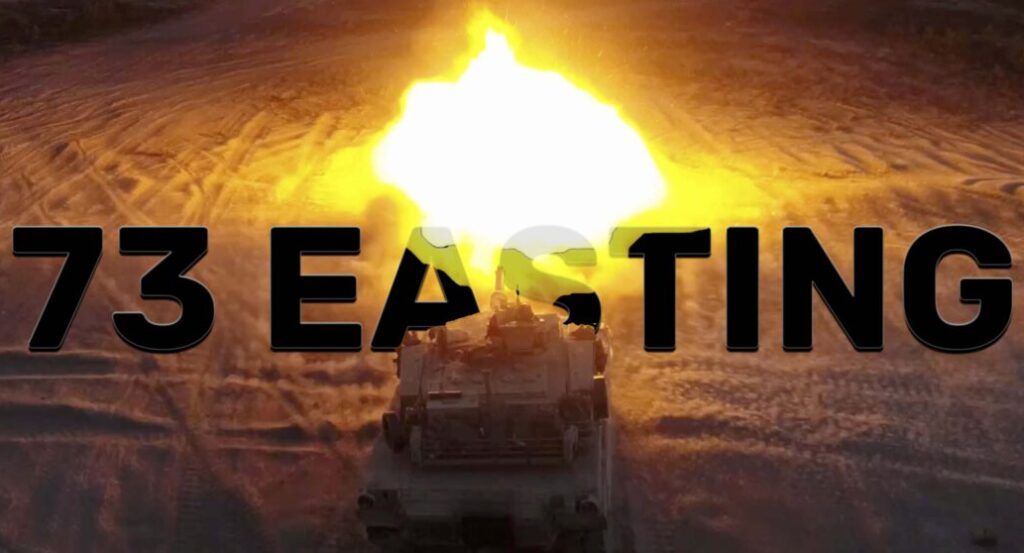How the Army’s Delta Force and Night Stalkers teamed up to rescue hostages in Iraq
- By Business Insider
Share This Article

This article by Stavros Atlamazoglou was originally published by Business Insider.
Almost a year after the US invasion in March 2003, Iraq was starting to spiral out of control, with a complicated Islamist and sectarian insurgency forming up.
On a normal spring day in 2004, a gang of Iraqi kidnappers abducted five contractors, four Italian and one Polish, off the streets of Baghdad.
Soon after the abductions, the Iraqi kidnappers executed one of the hostages, releasing a video of it as a warning. If the Italian and Polish governments didn’t pay a hefty sum, the rest of the hostages would be executed one by one.
US and Coalition special-operations units began looking for leads on the location of the four remaining captives. The task fell primarily to the top special-missions unit in-country: the US Army’s Delta Force.
Alongside Naval Special Warfare Development Group (DEVGRU), formerly known as SEAL Team 6, Delta Force is the US military’s dedicated counterterrorism and hostage-rescue special-missions unit.
With four squadrons (A, B, C, D) of about 70 operators each, the Unit, as Delta Force is known, has an exemplary hostage-rescue record, with several successful high-risk operations since its creation in the late 1970s.
Part of Joint Special Operations Command (JSOC), Delta Force and DEVGRU are the US’s first responders for any urgent hostage rescue and counterterrorism contingencies.
Find, fix, and finish

(U.S. Air Force photo/ Technical Sergeant John L. Houghton Jr.)
Related: 4 key differences between the Green Berets and Delta Force
A lot of groundwork has to be done before such an operation. The task force had to pinpoint the location of the hostages — a tall order in the middle of a growing insurgency that included several different sectarian militias and terrorist organizations, such as Al Qaeda in Iraq and the Iran-backed Mahdi Army.
For the majority of operations, that intelligence would come from other raids, including details from prisoner interrogations or from cellphones or other materials gathered by commandos during other missions.
Any information gleaned from interrogations or devices would give the task force additional leads for more raids in a perpetual cycle until they got to their primary target. Essentially, US and coalition special-operations units would “raid” themselves to the top.
“Time is really off the essence in HR [hostage rescue] and CT [counterterrorism] ops. Hostages or HVTs [high-value targets] can literally be moved in a matter of minutes,” a retired Delta Force operator with several deployments to Iraq told Insider.
“We’ve had occasions where when we launched a mission the target was there, but by the time we had arrived they had moved. These kinds of missions are very kinetic, and you can come up with a dry hole even if you’ve got overhead ISR [intelligence, surveillance, and reconnaissance] monitoring the area,” the retired operator said, speaking anonymously to discuss mission planning.

Related: Night Stalkers Don’t Quit: Role of elite Army pilots in two daring missions recognized
On this occasion, intelligence about the location of the four hostages came from a coalition special-operations unit that had debriefed a prisoner.
Once the suspected location of the hostages was pinpointed, JSOC and the intelligence community began monitoring the compound for any signals intelligence that might reveal more information about the kidnappers or the hostages.
In addition, JSOC teams conducted close-target reconnaissance of the area to gather more information about the building’s layout and the pattern of life of those inside.
On June 8, JSOC managed to pinpoint the exact location of the four hostages. Within minutes, the operators had donned their gear and the helicopters spun up for a daring daylight mission.
Objective Medford was on.
Usually, special-operations units operate in the night, using their advanced night-vision and thermal optics and goggles as an advantage. Daylight operations aren’t unheard of but are rare.
In this case, however, the Delta Force operators had to get to the compound as soon as possible to avoid a last-minute relocation of the hostages or, even worse, an execution. Every minute mattered.
“We’re Navy SEALs, we’re here to get you out!”
Related: SOCOM is looking to upgrade its Little Bird choppers
The assault force was composed of a troop of Delta Force operators from A Squadron and eight special-operations helicopters from the elite 160th Special Operations Aviation Regiment, nicknamed the “Night Stalkers.”
Four MH-60 Black Hawk choppers carried most of the ground force, while four AH/MH-6 Little Bird helicopters provided armed overwatch and assault support.
The assault force flew fast and low across busy highways and farms, touching down just outside the target compound. Knowing that their loud entry would alert the hostage-takers, the Delta Force operators sprinted toward the building.
In record time — just over 17 seconds — the Delta operators swept the compound and located and recovered the four hostages alive. The kidnappers still in the building offered no resistance.
A leaked helmet-camera video provides unique insight into a real hostage-rescue operation by one of the world’s top special-operations units.
As the Delta operators stormed the compound and secured the four hostages, Delta Force operator Jamey Caldwell shouted, “We’re Navy SEALs, and we’re here to get you out,” jokingly quoting the infamous 1990 movie “Navy SEALs,” starring Charlie Sheen.
The movie is a sore point for the Naval Special Warfare community, which sees it as bad publicity.
“That’s what we’re trained to do. We specialized in hostage rescue, and to me that was the most satisfying work. You’re risking your life for someone in dire need and making split-second decisions on whether the guy in the room is a threat or needs help,” Caldwell, now retired, told Coffee or Die Magazine last year.
Delta Force and the Night Stalkers had once again pulled off an impressive operation. As the insurgency flared up in the years that followed, they would have to repeat similar and more difficult feats on an industrial scale.
Read more from Business Insider:
- Police officer stabbed to death, suspect killed at transit hub outside the Pentagon: report
- Navy SEALs share how being a good leadership is all about balance
- British military agency warns of ‘potential hijack’ in the Gulf of Oman as multiple oil tankers report they have lost control
- US Special Operations Command has big plans for its new fleet of small attack planes
- A US Navy carrier strike group is deploying with advanced fifth-generation F-35C stealth fighter jets for the first time
Feature image: U.S. Air Force photo by Senior Airman Christopher Callaway
Related Posts
Sandboxx News Merch
-

‘Sandboxx News’ Dad Hat
$27.00 Select options This product has multiple variants. The options may be chosen on the product page -

‘AirPower’ Golf Rope Hat
$31.00 Select options This product has multiple variants. The options may be chosen on the product page -

‘Kinetic Diplomacy’ Bumper Sticker (White)
$8.00 Add to cart
Business Insider
Related to: Airpower, Special Operations

Ukraine peace negotiations don’t look promising

Unit 684 – The South Korean suicide squad with the tragic history

How American Abrams tanks devastated Russian tanks in Iraq

C-5 Super Galaxy: Anywhere in the world in 24 hours
Sandboxx News
-

‘Sandboxx News’ Trucker Cap
$27.00 Select options This product has multiple variants. The options may be chosen on the product page -

‘AirPower’ Classic Hoodie
$46.00 – $48.00 Select options This product has multiple variants. The options may be chosen on the product page -

‘AirPower’ Golf Rope Hat
$31.00 Select options This product has multiple variants. The options may be chosen on the product page -

‘Sandboxx News’ Dad Hat
$27.00 Select options This product has multiple variants. The options may be chosen on the product page
